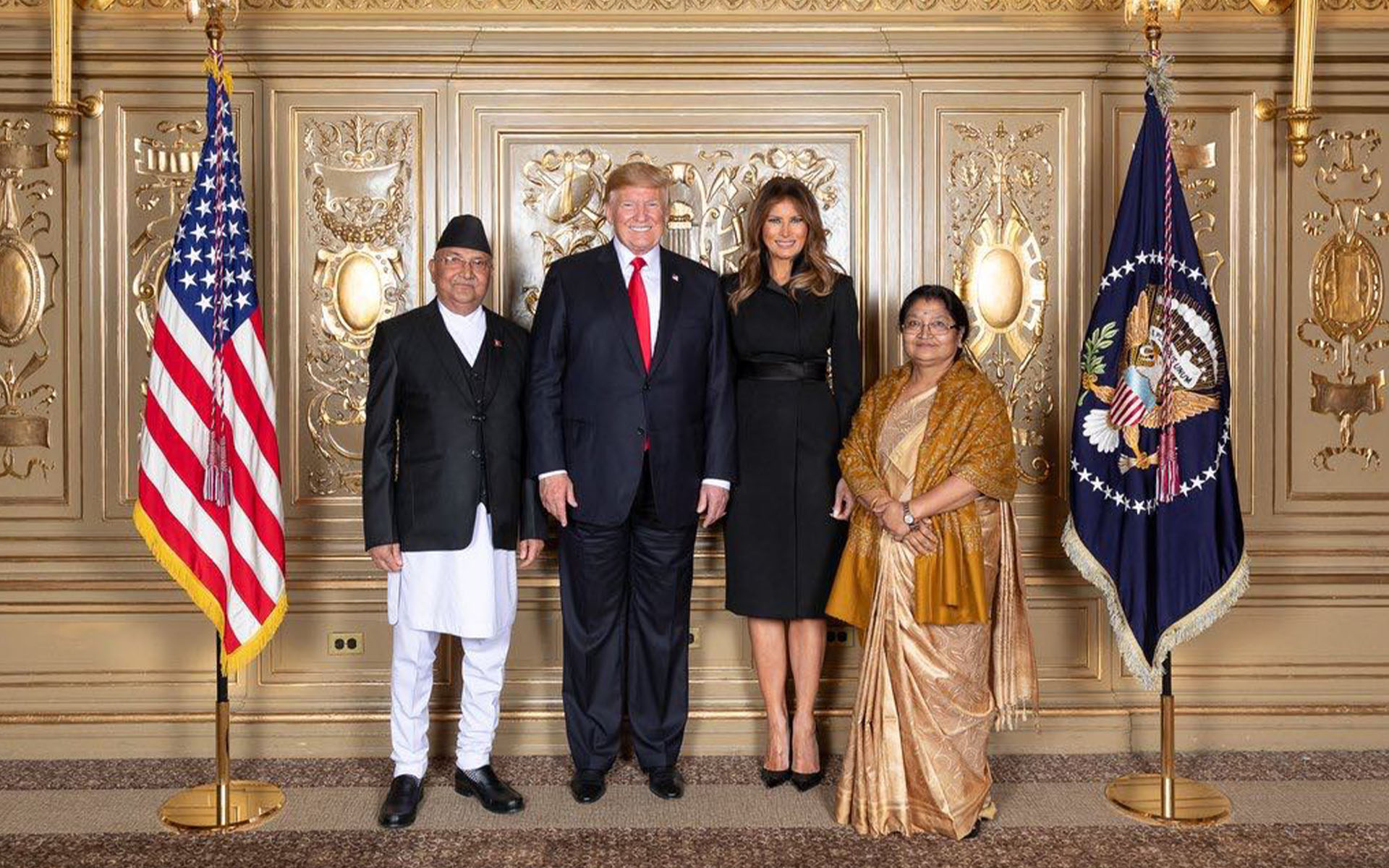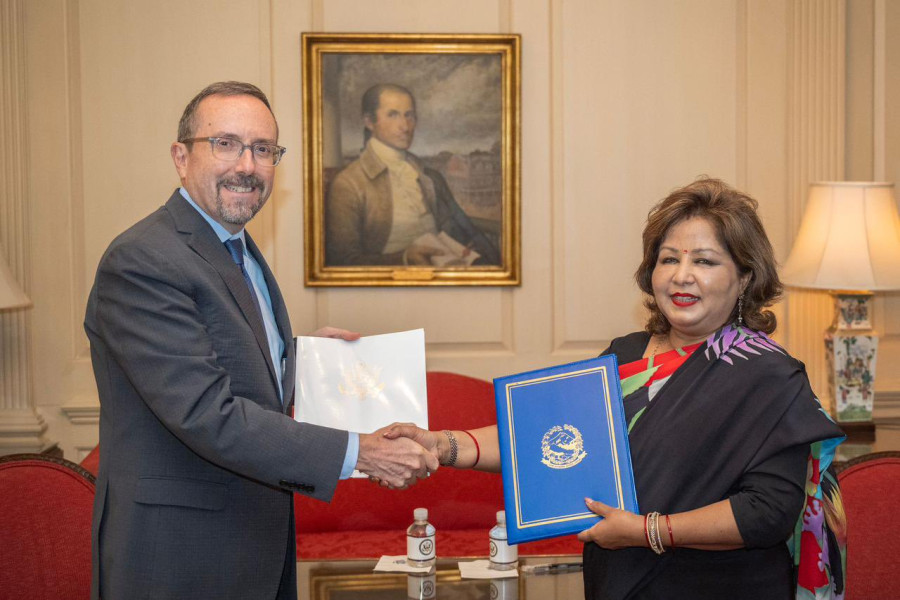
Nepal and the United States are set to celebrate 80 years of diplomatic ties in three years, a relationship that began in 1948. Despite being more than 7,000 kilometers apart, Nepal was one of the first South Asian countries to formalize relations with the US, a landmark development in regional diplomacy. Over the decades, this relationship has remained amicable and largely free of major conflict, evolving into a multifaceted association with government-to-government (G2G), people-to-people (P2P), economic, cultural, and geopolitical dimensions.
Geopolitics, the Nepali diaspora, and Nepal’s development have all contributed to this special bond. As the relationship extends into areas such as development, democracy, human rights, education, health, agriculture, disaster management, climate change, trade, and security, new challenges and opportunities are emerging amid shifting global dynamics and evolving US policies.
A Foundation of Collaboration: Nepal-US relations began in 1945 with the arrival of American emissary George R. Merrell, who later served as the first US ambassador (from New Delhi) in 1947. The US diplomatically recognized Nepal as a sovereign nation that year and honored Gurkha soldiers who fought in World War II by awarding them the Legion of Merit. By 1959, the US had opened its embassy in Kathmandu, affirming its commitment to Nepal’s development. Since 1951, the US has been a leading bilateral donor to Nepal, contributing over one billion dollars through programs such as the Point Four Program, which focused on technical assistance, and the United States Agency for International Development (USAID), established by President Kennedy in 1961. USAID has supported Nepal in sectors like education, health, agriculture, and democratic governance for over seventy years.
The US Peace Corps, initiated in Nepal in 1962, has advanced grassroots development by placing volunteers as English teachers, health professionals, and development advisors, primarily in rural areas. Though temporarily suspended during Nepal’s Maoist conflict, the program later resumed, continuing its legacy of capacity building. Additionally, the US Ambassador’s Fund for Cultural Preservation has supported the conservation of Nepal’s cultural heritage, while US agencies such as the Department of Justice (DOJ), the US Trade and Development Agency (USTDA), and the US Department of Agriculture (USDA) have funded various sectors.
However, policy shifts under the Trump administration have threatened this bilateral cooperation. The proposed suspension of USAID operations, with an estimated $131 million cut for 2025, jeopardizes crucial programs in education, health, agriculture, climate change, governance, democracy, and women’s empowerment. The UK’s decision to reduce its aid commitment from 0.5% to 0.3% of GNI adds to this potential double setback, highlighting the need for strategic resilience.
Nepal-US relations thrive at both governmental and civil society levels. On the G2G front, the US has traditionally supported Nepal’s democratic processes, economic development, and regional stability. A key example is the 2017 Millennium Challenge Corporation (MCC) compact- a $500 million grant for energy and transport infrastructure. Proposed by the Nepali government and tailored to its interests, this initiative aims to bolster Nepal’s infrastructure development. Nepal’s strong negotiating stance and commitment to partnerships with the US were evident in the MCC’s approval by the Nepali parliament in 2022, despite domestic opposition. The MCC’s extension until 2025 further stabilizes this collaboration.
An estimated 350,000 Nepalis currently live in the United States, forming the backbone of the P2P relationship between the two nations. Data from 2023–24 indicates that 16,742 Nepali students were studying in the US, making Nepal the tenth-largest source of international students. Organizations such as the Non-Resident Nepali Association (NRNA) are working to strengthen ties through public engagement and cultural preservation.

Nepal’s geopolitical position between India and China presents diplomatic balancing challenges, as demonstrated by the recent MCC controversy. Critics, especially those with pro-China leanings, framed the MCC as part of the US Indo-Pacific Strategy and counter to China’s Belt and Road Initiative (BRI), sparking domestic debates and drawing Chinese objections. In 2022, US Assistant Secretary of State Donald Lu warned that the US might reconsider bilateral relations if the MCC was not ratified, raising concerns about Nepal’s foreign policy autonomy. However, the MCC’s eventual approval enabled significant investments in power transmission lines and road upgrades, reinforcing mutual trust.
The Trump administration’s “America First” and transactional foreign policy in 2025 prioritizes larger nations over smaller ones like Nepal. Combined with aid cuts, this shift challenges Nepal to navigate a complex foreign policy landscape while maintaining strong ties with the US.
A strategic roadmap centered on four pillars can enhance Nepal-US relations and address 21st-century challenges:
The Nepal-US relationship, spanning more than 75 years, is a rich tapestry of cooperation, cultural ties, and shared aspirations. From USAID’s early initiatives to the MCC’s infrastructure investments, the friendship has underpinned Nepal’s development. The vibrant Nepali diaspora in the US, especially students, serves as a living bridge between the two nations.
As new challenges emerge from shifting geopolitics and foreign aid uncertainties, strengthening this relationship through dialogue, education, governance collaboration, and institutionalized P2P engagement is key. Beyond diplomatic protocol, enduring trust, transparency, and cooperation focused on development will determine the future of Nepal-US relations. The true potential of this partnership can only be realized in a world where political will and mutual respect prevail.